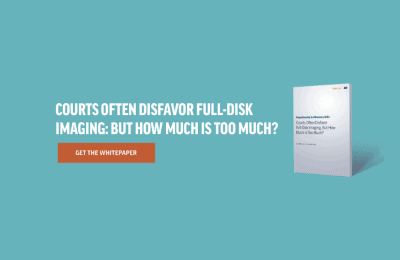Relativity and X1 have published an updated joint legal whitepaper addressing full-disk imaging as a disfavored collection practice in civil litigation, with Relativity eDiscovery attorney David Horrigan as the lead author. This paper is a substantive update from the original published a year ago, adding discussion of important and relevant new case law published in the past 12 months.

The paper notes that
“if the preliminary data from the first five months of 2022 are any indication, we may be seeing that the law of proportionality is becoming more settled — and that courts continue to disfavor full-disk imaging.”
The paper delves into all the legal reasons, including detailed analysis of case law, the Federal Rules of Civil Procedure, and the Sedona Principles establishing why forensic collection is not required in civil litigation. The paper primarily focuses on the principles of proportionality in its legal analysis as well as case law issued prior to the 2015 amendment to the Federal Rules of Civil Procedure, which gave greater prominence and clarification of the proportionality rules.
One of the recent updated cases included is Besman v. Stafford, where the appellate court reversed and remanded a trial court’s order of a forensic examination of a law firm computer, holding the trial court erred in failing to take precautions to protect the privileged and confidential information on the device.
“Generally, courts are reluctant to compel forensic imaging, largely due to the risk that imaging will improperly expose privileged and confidential material contained on the hard drive,”
Judge Anita Laster Mays wrote for the appellate court.
This is an important topic as a key problem in eDiscovery that drives inefficiencies and higher costs is that default collection methods often involve full-disk imaging—a forensic examination of an entire computer—when searching for responsive data. As the whitepaper notes,
“it turns out full-disk imaging is not required for most eDiscovery collections. In fact, courts often disfavor the practice.”